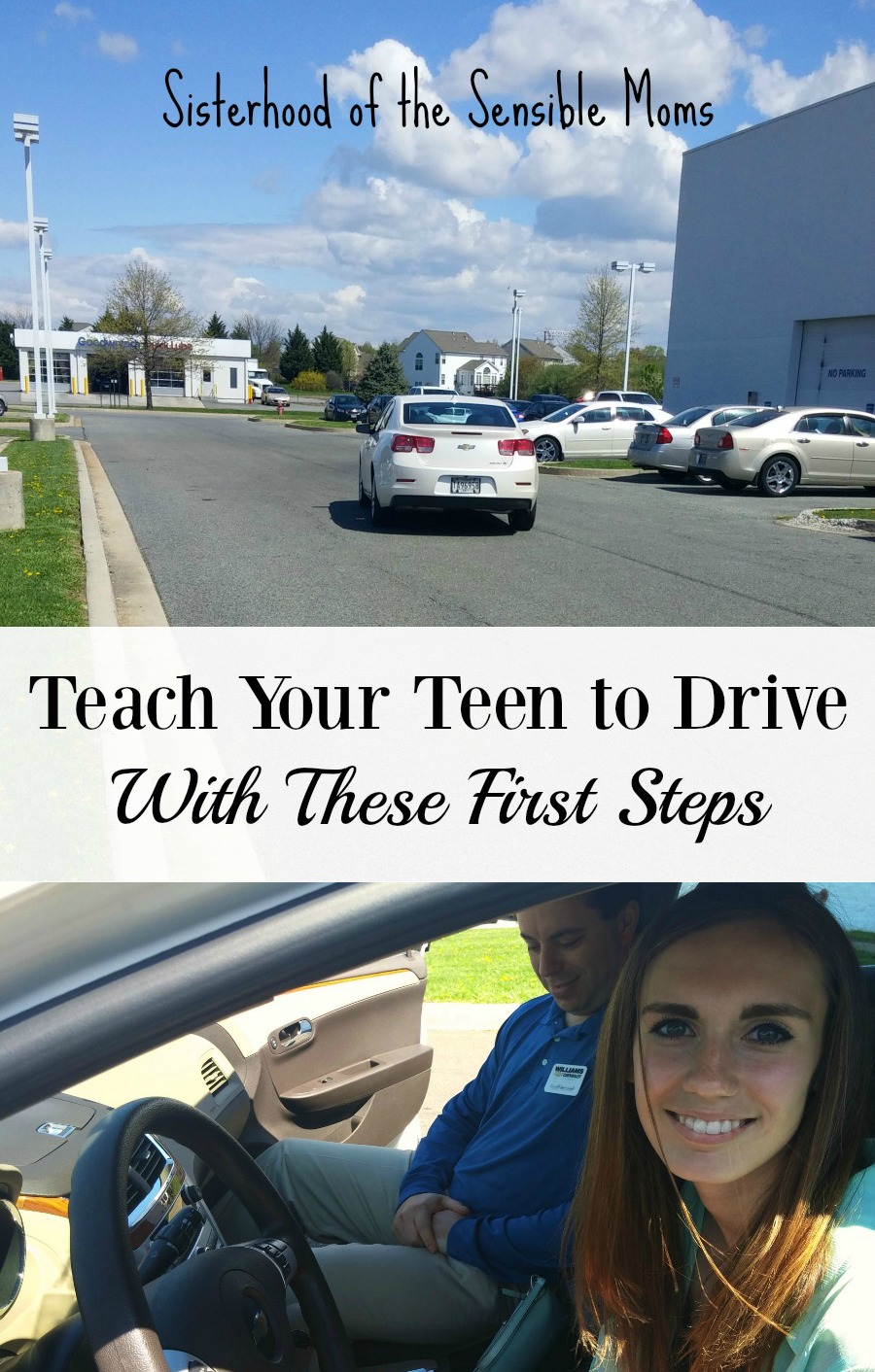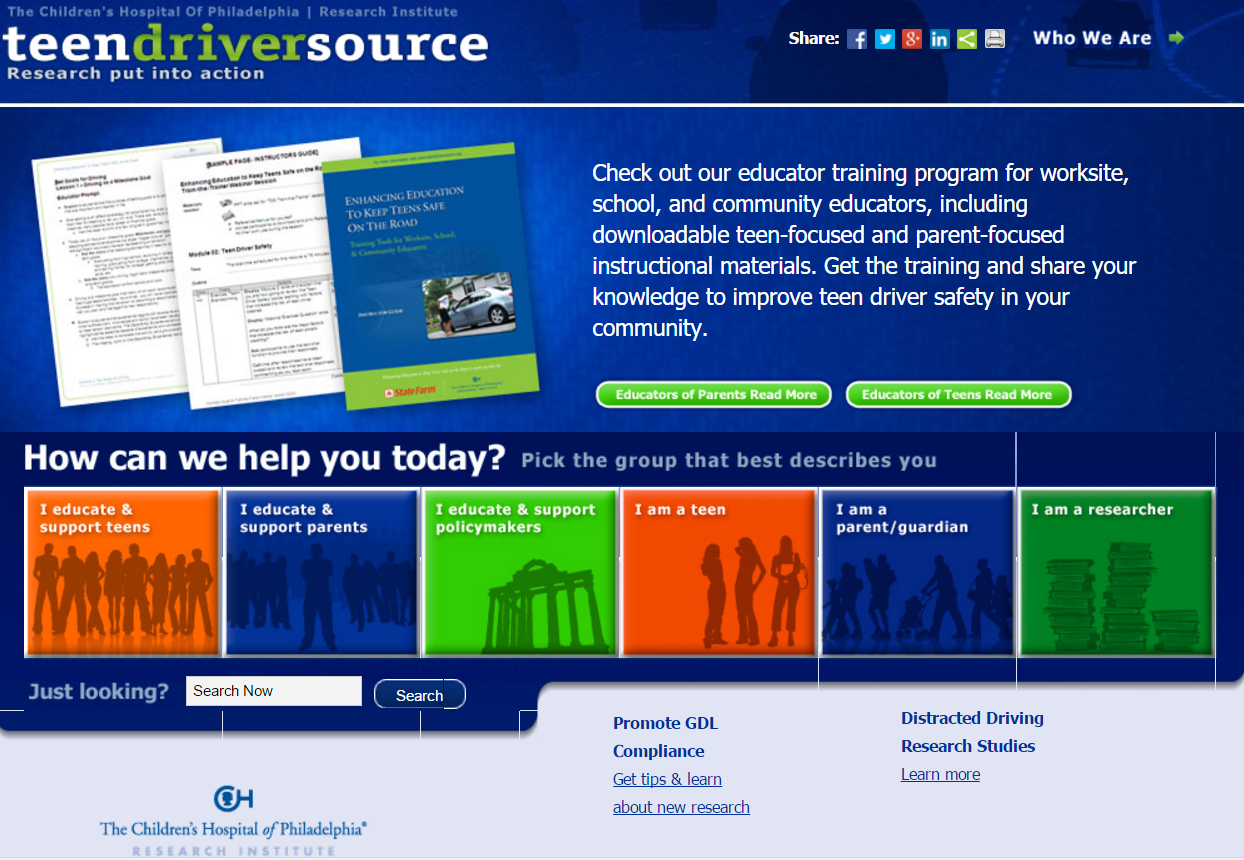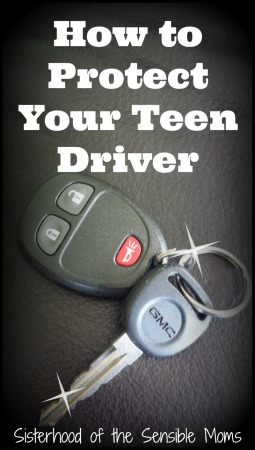Chances are if you have a teen ready to drive, you’ve been motoring around for a decade or three yourself. It’s hard to recall a time when jumping behind the wheel was fresh and new, but this is exactly the mindset you need when teaching your child to drive. Yes, YOU teach your darling to drive. Maybe senility is knocking at my door, but I really feel like “back in the day” the drivers education instructor did most of the well, instructing. Where I live in Maryland, my kid needs to be in the car with me for 20 hours before they get behind-the-wheel training with an instructor.
Here’s a direct quote from the pamphlet:
The behind the wheel lessons are intended to guide your teen by evaluating their current driving skills, determining where they need more practice, and preparing them for the MVA exam. The parent/adult driver(s) that work with the student for the 60+ practice hours are teaching the teen how to drive.
You could have knocked me over with a feather once I realized this with my oldest daughter. I was already finding this phase of parenting to be the most challenging (realizing 14 years too late that potty training was NOTHING), but finding out I couldn’t really turn this over to a professional was pretty disheartening. Like a bag of chocolate chips followed by a red wine chaser disheartening.
Hey, I’m an experienced driver with a clean record, and the DMV gave me a trifold pamphlet, so it was all good, right? It wasn’t quite as mind-blowing as being handed my firstborn at the hospital with the proclamation “Go forth and be a parent!” but it wasn’t great either. At least now I had the internet. Okay, I had the internet when she was born, but Google didn’t launch until two months later. Let that sink in.
But while handy dandy Google had answers for me this time, they were all over the place. All I wanted to know was where to begin. Luckily I was able to formulate a plan by piecing together what I read and adding it to the advice offered by our Facebook followers.

My biggest revelation with my oldest daughter was that the first lessons happened way before the open road. My biggest discovery with my second daughter was that The Children’s Hospital of Philadelphia (CHOP) launched teendriversource.org; a site chock full of research-based guidelines, tools, and tutorials for parents, teens, and educators. The only “problem” is there is so much information, it’s hard to initially land at the starting point.
Here’s how to get rolling:
First Steps for Teaching Your Teen to Drive
- Start with getting YOUR mind in the right place. It is your job to remove distractions and one of them is YOU. Yep. Teens report that one of the biggest distractions is when parents get emotional. So get ready for an Oscar nomination because you must maintain an air of calm through it all: keep your voice modulated, try not to stomp a hole through the floorboard, and always have them pull the carover to discuss dicey situations. This two minute video can give you further tips on creating the right learning environment.
- Go over the car thoroughly. Remember this is all new. Consider every button mysterious and explain it. Describe how to adjust the mirrors and the seats. Explain how you turn on the car and work the pedals. Need some help remembering what all of the basic steps are? Check out these short videos where it is all laid out. Have your teen put the car in gear and go down your driveway a bit (or do this in a parking lot) so your teen can use the pedals and see if the mirrors are positioned correctly. Believe it or not, this may be enough for the first lesson.
- Practice in a parking lot . . . a big, empty one. Go over the car again. Then just have them get a feel for the vehicle in motion. Play around with the accelerator and brake. Have them discover what reverse feels like. Just let them drive around developing a feel for the “corners” of the vehicle. You can even set up some cones or boxes for them to maneuver around. You can review tutorials for your parking lot sessions here.
- Discuss scanning techniques. SO IMPORTANT, BUT SO OFTEN OVERLOOKED. You avoid accidents by anticipating hazards you detect while scanning your surroundings. Good drivers routinely sweep their gaze beyond the lane in front of them and constantly check their mirrors. Guess what? New drivers tend to stare straight ahead. Teens must be told how to move their eyes and they need to be reminded every time they get behind the wheel. Scanning from lesson one helps cement it into a habit as soon as possible. For help describing the technique, watch Parking Lot: Introduction to Scanning.
- Practice checking for blind spots. Novices need to learn early on that checking mirrors is not enough, they need to physically turn their heads to check blind spots. It’s best to start this early because it may take a while before they can turn their head without turning the wheel. Teaching how to look around before backing up fits in nicely here too.
- Comment while YOU drive. Talk about how you’re scanning the road. Comment on the mechanics of making a turn while you’re doing it (so much easier than trying to remember and reconstruct how you do that automatic action while you’re sitting in the passenger seat). Explain why you picked that particular parking space. However, to avoid eye rolls think of this as dispensing public service announcements, not creating documentaries. Narrate little tidbits, not full instruction manuals.
Don’t be anxious to blow through these steps to get out on the road because that’s where you think the real lessons occur. It is so hard for novice drivers because they have to think about every single little action with their higher brains. That processing adds crucial seconds to reaction times.
Driving is so automatic for you because you are doing it from “muscle memory” controlled by your lower brain, and more specifically, your cerebellum. Every time your child drives, they are strengthening neural connections in their cerebellum and thus heading toward better and faster reactions. “Practice makes perfect” was coined for this part of the brain. Because I know these neural pathways are being forged, I don’t rush my kids out onto the interstate. Every time they practice braking on a local road means they will be better at braking on the highway. It’s a matter of brain training.
So there you have it: not everything (by a long shot), but at least your starting point. Don’t worry though, teensource.org will take you to the next level, too. Stay calm, buckle up, have a plan, and know you’re not the only one who is not a fan of this part of parenting!
-Ellen
Want to know more about how to protect your teen driver? See what we wrote about it here.
Our kids also made a video with us about distracted driving. Watch it for the valuable information, enjoy it because they are adorable.
Hey! Want to buy our new book? I Just Want to Be Perfect brings together 37 hilarious and relatable essays that showcase the foibles of ordinary women trying to be perfect.
You can follow us on Google+, Twitter, Facebook, Instagram, and Pinterest.
Check out our books, “I Just Want to Be Alone” and “You Have Lipstick on Your Teeth.”

















